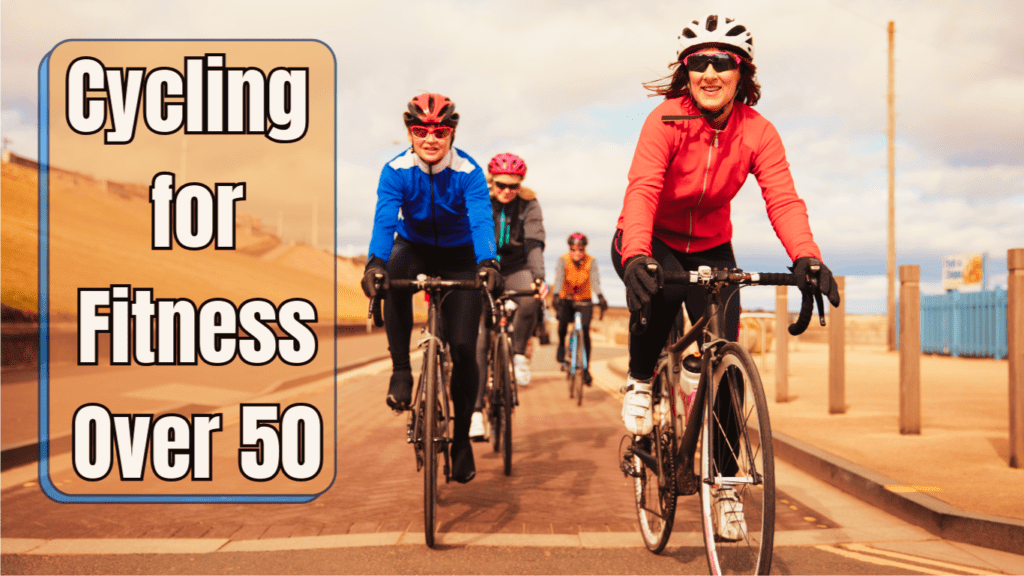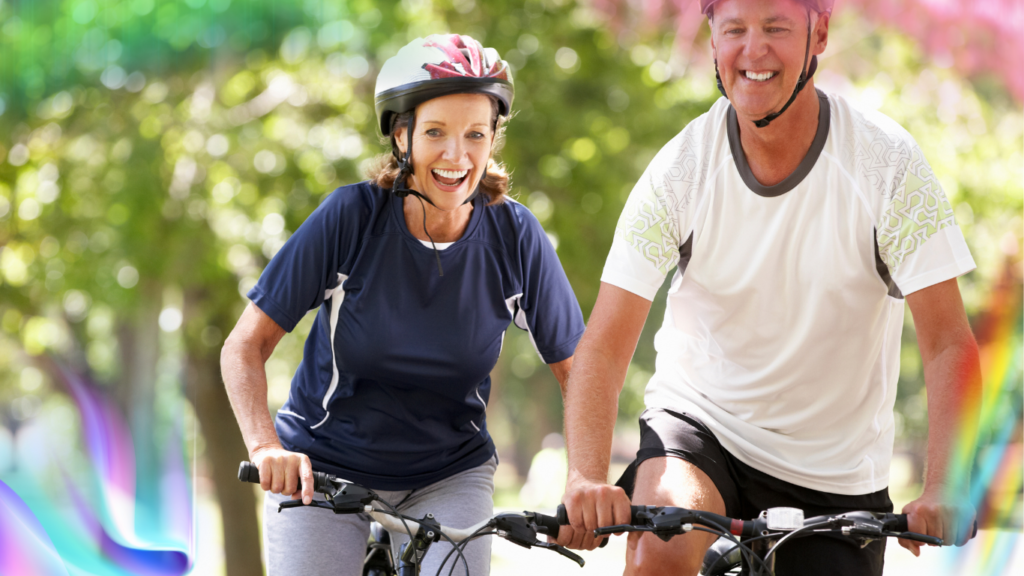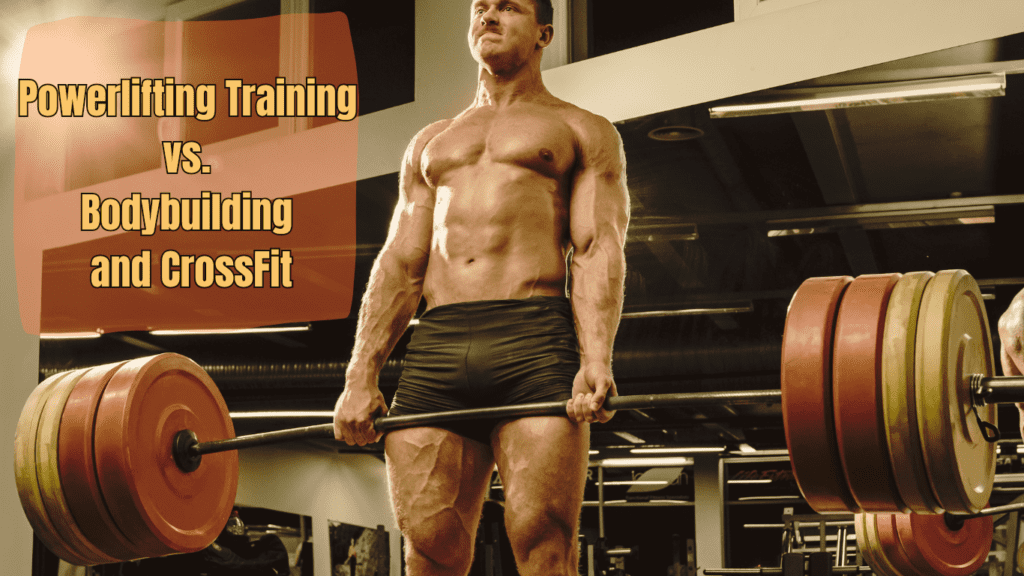Introducing Cycling for Fitness Over 50
Cycling for Fitness Over 50 is a fantastic way to embrace a healthy lifestyle and feel more energized as we age.
As a personal trainer with years of experience, I’ve had the pleasure of witnessing numerous clients experience incredible transformations through fitness. One such memorable client is Lisa, a vibrant 58-year-old who came to me seeking a change in her sedentary lifestyle. Lisa’s journey with cycling exemplifies the remarkable benefits this activity can offer.
Research indicates that regular physical activity can slash the risk of chronic diseases by up to 50% and decrease the likelihood of premature death by 30%. These figures aren’t just numbers; they represent tangible improvements in people’s lives, much like Lisa’s journey. Cycling for fitness over 50 emerges as an exceptional option to reap these rewards. This article aims to explore why cycling is such an effective fitness avenue for individuals over 50 and provide insights into starting and maintaining a cycling routine.

One of the standout advantages of cycling for fitness over 50 is its low-impact nature. Unlike high-impact activities such as running, cycling places minimal strain on the joints, making it ideal for older adults concerned about joint health or arthritis. It allows for cardiovascular exercise without the heightened risk of injury associated with other forms of physical activity.
Furthermore, cycling is highly adaptable. Whether one prefers leisurely rides through the park, challenging hill climbs, or long-distance cycling adventures, there’s a cycling style to suit every preference and fitness level. This versatility makes it both accessible and enjoyable, crucial factors in maintaining a consistent exercise regimen.
The cardiovascular benefits of cycling cannot be overstated. As individuals age, cardiovascular health becomes increasingly vital. Regular cycling strengthens the heart, enhances circulation, and reduces blood pressure. For those over 50, this translates to a reduced risk of heart disease and stroke, contributing to a longer and healthier life.
Moreover, cycling for fitness over 50 significantly impacts mental well-being. Exercise releases endorphins, the body’s natural mood lifters, which can be particularly beneficial for older adults navigating life changes such as retirement or empty nest syndrome. Cycling provides an opportunity to clear the mind, alleviate stress, and enhance overall mood.
Subscribe And Get Our Free E-Book:Unlocking The Power Of Nutrition-Supplements, Substitutes, and Superfoods!
Social interaction is another valuable aspect of cycling. Joining a local cycling group fosters a sense of community and support, promoting motivation and friendship. This social engagement is essential for maintaining mental and emotional well-being as we age.
Concerns about the practical aspects of starting a new fitness routine need not deter anyone from cycling for fitness over 50. It doesn’t require a significant financial investment, as many communities offer affordable bike rental or share programs. Additionally, cycling doesn’t necessitate a gym membership, specialized attire, or advanced skills. It’s a simple, accessible form of exercise that almost anyone can partake in.
When Lisa first embarked on her fitness journey, she harbored apprehensions about returning to exercise after a prolonged hiatus. However, after just a few weeks of consistent cycling, she found herself eagerly anticipating her rides. She relished the sense of freedom, connection to nature, and noticeable improvements in her stamina and strength.
The objective of this article, and my role as a personal trainer, is to encourage readers to consider cycling for fitness over 50 as a viable and enjoyable means of staying active. Whether you’re a seasoned athlete or someone who hasn’t exercised in years, cycling offers a pathway to better health and well-being. It’s never too late to start, and the benefits are well worth the effort. So, dust off that old bike, or consider investing in a new one, and discover the joy and benefits of cycling for yourself. Through my experiences with clients like Lisa, I’ve seen firsthand how cycling can transform lives, and I’m confident it can do the same for you.
Boost Your Cycling Fitness Over 50 Video/ Cycling for Fitness Over 50
Benefits of Cycling for Fitness Over 50
(for people over 50)
When it comes to improving overall health, few activities rival the effectiveness of cycling for fitness over 50. As a personal trainer, I’ve seen firsthand the multitude of benefits it offers, both physically and mentally. Let’s explore these benefits in detail:
Physical Benefits:
Cardiovascular Health:
Cycling is a fantastic way to get your heart pumping and your blood flowing. Regular cycling strengthens the heart muscle, improves circulation, and lowers blood pressure, reducing the risk of cardiovascular diseases such as heart attacks and strokes.
Muscle Strength and Flexibility:
Pedaling a bike engages various muscle groups, including the quadriceps, hamstrings, calves, and glutes. Over time, this repetitive motion builds muscle strength and enhances flexibility, particularly in the lower body.
Joint Health:
Unlike high-impact activities like running, cycling is gentle on the joints. The smooth, fluid motion of cycling helps to lubricate the joints and alleviate stiffness, making it an excellent option for those with joint issues or arthritis.
Weight Management:
Cycling is a calorie-burning activity that can aid in weight management. By incorporating regular cycling sessions into your routine, you can burn excess calories, improve your metabolic rate, and maintain a healthy weight.
Mental Benefits:
Stress Reduction:
There’s something inherently therapeutic about riding a bike. The rhythmic motion, coupled with the fresh air and scenic views, can help to melt away stress and tension, leaving you feeling more relaxed and at ease.
Improved Mood and Mental Well-being:
Exercise, including cycling, triggers the release of endorphins, often referred to as the body’s “feel-good” hormones. These chemicals boost mood, reduce feelings of anxiety and depression, and promote overall mental well-being.
Social Benefits:
Community Engagement:
Joining a cycling community or group opens the door to a whole new social network. Whether it’s participating in group rides, attending cycling events, or simply connecting with fellow cyclists online, being part of a community adds an extra layer of enjoyment and motivation to your cycling journey.
Social Interactions Through Group Rides:
Group rides are not only a great way to stay accountable and motivated, but they also provide opportunities for social interaction and camaraderie. Sharing the road with like-minded individuals fosters friendships, encourages healthy competition, and makes the overall cycling experience more enjoyable.
In summary, cycling for fitness over 50 offers a myriad of benefits that extend beyond just physical health. From improving cardiovascular fitness and muscle strength to reducing stress and fostering social connections, cycling is a holistic activity that can enhance your overall quality of life. So, grab your helmet, hop on your bike, and start pedaling your way to better health and happiness today!
Getting Started With Cycling for Fitness Over 50-Practical Tips

So, you’ve decided to embark on a journey of cycling for fitness over 50 – fantastic choice! As your friendly neighborhood personal trainer, let me guide you through some practical tips to get started on the right foot.
Choosing the Right Bike:
Types of Bikes Suitable for Older Adults:
When it comes to selecting a bike, there are several options to consider. Road bikes, with their lightweight frames and narrow tires, offer speed and efficiency, perfect for those looking to cover long distances. Hybrid bikes combine the features of road bikes and mountain bikes, providing versatility and comfort for various terrains. And for those seeking an extra boost, e-bikes, equipped with electric motors, make cycling uphill or against strong winds a breeze.
Importance of Bike Fitting and Comfort:
Regardless of the type of bike you choose, proper fit and comfort are paramount. A bike that is too large or too small can lead to discomfort, fatigue, and even injury. Ensure that your bike is adjusted to your body proportions, with the seat at the correct height and the handlebars within reach. Investing in a professional bike fitting session can make a world of difference in your cycling experience.
Essential Gear:
Helmets, Padded Shorts, Gloves, and Other Protective Gear:
Safety should always come first when cycling. A properly fitted helmet is non-negotiable – it can mean the difference between a minor tumble and a serious head injury. Padded shorts provide cushioning and support during long rides, while gloves offer grip and protection for your hands. Consider investing in additional protective gear such as knee and elbow pads, especially if you’re venturing onto off-road trails.
Importance of Visibility (Reflective Gear, Lights):
Visibility is crucial, particularly when cycling in low-light conditions or busy traffic. Equip your bike with front and rear lights, reflectors, and brightly colored clothing to make yourself more visible to motorists and pedestrians. Remember, being seen is key to staying safe on the road.
Health Check:
Importance of Consulting a Doctor Before Starting:
Before you hit the road, it’s essential to consult with your doctor, especially if you have any underlying health conditions or concerns. Your doctor can provide valuable insights into your physical condition and offer personalized advice on how to safely incorporate cycling into your fitness routine.
Understanding Personal Limits and Any Medical Conditions:
Listen to your body and respect its limits. If you experience pain, discomfort, or unusual symptoms while cycling, don’t ignore them. Take breaks as needed, stay hydrated, and know when to seek medical attention. Understanding your body and any medical conditions you may have is crucial for enjoying cycling for fitness over 50 safely and effectively.
Creating a Cycling Routine
Creating a cycling routine tailored to your needs and goals is key to maximizing the benefits of cycling for fitness over 50. As your trusty personal trainer, let me guide you through the process and help you build a routine that works for you.
Starting Slow:
Gradual Increase in Duration and Intensity:
When starting a new cycling routine, it’s essential to ease into it gradually. Begin with shorter rides at a comfortable pace and gradually increase both the duration and intensity as your fitness improves. This gradual progression not only reduces the risk of injury but also allows your body to adapt and build endurance over time.
Sample Beginner’s Cycling Plan:
To help you get started, here’s a sample beginner’s cycling plan:
| Day | Activity | Duration | Intensity |
|---|---|---|---|
| Monday | Easy Ride | 30 minutes | Moderate |
| Tuesday | Rest or Cross-training | – | – |
| Wednesday | Interval Training | 20 minutes | High |
| Thursday | Easy Ride | 45 minutes | Moderate |
| Friday | Strength Training | 30 minutes | Low |
| Saturday | Long Ride | 60 minutes | Moderate |
| Sunday | Rest | – | – |
Feel free to adjust the duration and intensity based on your fitness level and schedule. The key is to find a balance that challenges you without overexerting yourself.
Incorporating Variety with Cycling for Fitness Over 50:
Different Types of Cycling Workouts:
Variety is the spice of life – and cycling is no exception. Incorporating different types of workouts into your routine helps prevent boredom, keeps your body guessing, and targets different muscle groups.
- Intervals: Alternate between short bursts of high-intensity effort and periods of recovery. This type of workout improves cardiovascular fitness and boosts calorie burn.
- Long Rides: Aim for longer, steady-paced rides to build endurance and improve your overall fitness level.
- Hill Training: Incorporate hills into your rides to challenge your leg muscles and improve strength and power.
Cross-training with Other Activities:
While cycling is an excellent form of exercise, it’s essential to incorporate cross-training activities to maintain overall fitness and prevent overuse injuries. Consider activities such as walking, swimming, or strength training to complement your cycling routine. These activities help improve flexibility, strengthen muscles that may be neglected during cycling, and provide a mental break from the bike.
Rest and Recovery:
Importance of Rest Days:
Rest days are just as important as training days. They give your body a chance to repair and rebuild muscle tissue, replenish energy stores, and prevent burnout. Listen to your body and don’t be afraid to take a day off when you need it.
Stretching and Flexibility Exercises:
In addition to rest days, incorporating stretching and flexibility exercises into your routine is crucial for maintaining mobility and preventing injuries. Focus on stretching the major muscle groups used in cycling, such as the quadriceps, hamstrings, calves, and lower back. Hold each stretch for 15-30 seconds and repeat 2-3 times.
By following these guidelines and customizing your cycling routine to suit your individual needs, you’ll be well on your way to reaping the full benefits of cycling for fitness over 50. Remember, consistency is key, so stay committed to your routine and enjoy the journey to better health and fitness!
Safety Tips for Cycling Over 50
Ensuring a safe and enjoyable experience is paramount when embracing cycling for fitness over 50. As your dedicated personal trainer, I’ll share some vital tips to keep you safe and comfortable during your cycling endeavors.

Road Safety:
Understanding Traffic Rules and Cycling Signals:
Before hitting the road, it’s crucial to understand and abide by traffic rules specific to cyclists. Familiarize yourself with hand signals for indicating turns and stops, and always adhere to traffic signals and signs. Remember, cycling for fitness over 50 involves sharing the road with other vehicles, so ride predictably and defensively.
Safe Routes and Cycling Paths:
When planning your cycling routes, prioritize safety by choosing paths with minimal traffic and dedicated cycling lanes. Look for designated cycling paths or quieter streets that offer a safer riding environment. Utilize cycling maps or apps to identify safe routes and avoid busy roads and hazardous intersections whenever possible.
Weather Considerations:
Dressing Appropriately for Different Weather Conditions:
Weather can vary greatly, so it’s essential to dress appropriately to stay comfortable and protected during your rides. In warm weather, opt for lightweight, breathable clothing that wicks away sweat and shields you from the sun’s rays. During colder temperatures, layer up to retain warmth and consider investing in thermal cycling gear to stay cozy.
Staying Hydrated and Managing Heat/Cold:
Proper hydration is critical regardless of the weather conditions. Carry an ample supply of water and drink regularly to prevent dehydration, especially during extended rides or in hot climates. In extreme heat, schedule your rides during cooler parts of the day, take frequent breaks in shaded areas, and wear moisture-wicking clothing to stay cool. Conversely, in cold weather, dress in layers, protect exposed skin from frostbite, and use hand warmers or heated gear as needed.
Preventing Injuries:
Proper Warm-up and Cool-down Routines:
Prepare your body for cycling for fitness over 50 by incorporating proper warm-up and cool-down routines into your cycling regimen. Prior to your ride, perform dynamic stretches or engage in a short, easy-paced warm-up ride to loosen your muscles and increase blood flow. After your ride, take time to cool down with gentle stretching to aid muscle recovery and reduce stiffness.
Listening to Your Body and Avoiding Overexertion:
Listen to your body’s cues and avoid pushing yourself beyond your limits. Pay attention to any signs of discomfort, pain, or fatigue during your rides, and adjust your pace or take breaks as needed. Overexertion can lead to overuse injuries and setbacks, so prioritize your health and well-being by respecting your body’s limits.
By incorporating these safety tips into your cycling for fitness over 50 routine, you can enjoy the physical and mental benefits of cycling while minimizing the risk of accidents and injuries. Remember, safety is key to long-term enjoyment and success in your cycling endeavors, so ride smart and stay safe out there!
Overcoming Challenges
Overcoming challenges is an integral part of embracing cycling for fitness over 50. As your trusted personal trainer, let me share some valuable insights to help you navigate and conquer these obstacles with ease.
Dealing with Physical Limitations for Cycling for Fitness Over 50:
Adjusting the Bike and Riding Style for Comfort:
Physical limitations are common as we age, but they don’t have to hinder your cycling journey. Make adjustments to your bike and riding style to accommodate any physical limitations you may have. Consider installing a more comfortable seat, adjusting the handlebars for better ergonomics, or opting for a step-through frame for easier mounting and dismounting.
Using E-bikes for Added Assistance:
E-bikes are a game-changer for those dealing with physical limitations or reduced stamina. These electric-assist bikes provide a boost of power when needed, making hills easier to conquer and long rides more manageable. Embracing e-bikes allows you to enjoy the benefits of cycling without feeling overwhelmed by physical challenges.
Staying Motivated with Cycling Over 50:
Setting Achievable Goals:
Setting realistic and achievable goals is essential for maintaining motivation and momentum in your cycling for fitness over 50 journey. Start with small, attainable goals, such as riding a certain distance or completing a specific route, and gradually increase the difficulty as you progress. Celebrate your achievements along the way to stay motivated and inspired.
Finding a Cycling Buddy or Group:
Cycling is often more enjoyable when shared with others. Find a cycling buddy or join a local cycling group to stay motivated and accountable. Riding with others not only provides companionship and support but also adds an element of friendly competition and camaraderie. Plus, sharing the experience with like-minded individuals can make overcoming challenges feel less daunting and more achievable.
Tracking Progress with Apps and Devices:
Utilizing Apps and Devices to Track Progress:
In today’s digital age, there are countless apps and devices available to help you track your cycling for fitness over 50 progress. From GPS cycling computers to smartphone apps, these tools allow you to monitor your rides, track your mileage, and analyze your performance metrics such as speed, distance, and elevation gain. By tracking your progress over time, you can see how far you’ve come and stay motivated to continue pushing yourself.

By addressing physical limitations, staying motivated, and utilizing tools to track progress, you can overcome challenges and unlock the full potential of cycling for fitness over 50. Remember, every obstacle you overcome brings you one step closer to achieving your fitness goals and enjoying the many benefits that cycling has to offer. So, embrace the journey, stay resilient, and pedal on with confidence and determination!
Inspirational Stories About Cycling for Fitness Over 50
Let me share with you two inspiring stories of individuals who have embraced cycling for fitness over 50 and transformed their lives in remarkable ways.
Mary’s Journey of Resilience
Meet Mary, a 55-year-old retiree who found herself at a crossroads after facing a series of personal challenges. Struggling with grief after losing her spouse and feeling adrift in retirement, Mary knew she needed a change. Determined to reclaim her sense of purpose and vitality, she turned to cycling as a source of solace and renewal.
“Cycling for fitness over 50 became my lifeline,” Mary shares. “It gave me a reason to get out of bed in the morning and a sense of accomplishment with each pedal stroke.”
Despite initial doubts and physical limitations, Mary persevered, gradually building up her strength and stamina with each ride. As she explored new routes and challenged herself to push beyond her comfort zone, Mary discovered a newfound sense of freedom and empowerment on two wheels.
“Cycling allowed me to escape the weight of my grief and rediscover the joy of living in the moment,” Mary reflects. “With each mile, I felt stronger, more resilient, and more alive than I had in years.”
Today, Mary is thriving, embracing life with renewed passion and purpose. She continues to push her boundaries, participating in charity rides and cycling events to raise awareness for causes close to her heart. For Mary, cycling for fitness over 50 isn’t just about physical exercise – it’s a journey of healing, self-discovery, and limitless possibility.
John’s Triumph Over Adversity
John’s journey with cycling for fitness over 50 began as a means of overcoming adversity and reclaiming his health. Diagnosed with a chronic health condition in his early 50s, John found himself facing an uncertain future filled with doctor’s appointments, medications, and physical limitations.
“Cycling for fitness over 50 wasn’t something I ever imagined for myself,” John admits. “But when life throws you a curveball, you have to adapt and find new ways to thrive.”
Determined to take control of his health and defy the odds, John turned to cycling as a form of therapy and rehabilitation. With each pedal stroke, he found strength, resilience, and a renewed sense of purpose.
“Cycling became my sanctuary,” John reflects. “It allowed me to focus on what I could do, rather than what I couldn’t. It gave me hope and a reason to keep moving forward.”
Through sheer determination and unwavering commitment, John defied expectations, surpassing milestones he once thought impossible. As he conquered challenging terrain and conquered personal demons, John’s confidence soared, and his health steadily improved.
“Cycling for fitness over 50 transformed my life in ways I never imagined,” John shares. “It taught me resilience, perseverance, and the power of the human spirit to overcome even the greatest of obstacles.”
Today, John is an inspiration to others, sharing his story of triumph over adversity and encouraging fellow cyclists to embrace every obstacle as an opportunity for growth. For John, cycling for fitness over 50 isn’t just about physical exercise – it’s a testament to the indomitable spirit that resides within us all.
These stories of resilience and triumph serve as powerful reminders of the transformative power of cycling for fitness over 50. Whether overcoming personal loss, health challenges, or simply seeking a new lease on life, cycling offers a pathway to healing, renewal, and endless possibility. As Mary and John’s journeys demonstrate, with determination, perseverance, and a willingness to embrace the unknown, anything is possible. So, saddle up, my friends, and let’s ride towards a brighter, healthier future together!
Final Words from Ayinta ( Your Favourite Personal Trainer)
Here’s a simplified chart summarizing the key points and information from the article on cycling for fitness over 50:
| Aspect | Key Points |
|---|---|
| Benefits | – Improved cardiovascular health – Increased muscle strength and flexibility – Joint health maintenance |
| – Effective weight management – Reduced stress levels – Enhanced mood and mental well-being | |
| – Opportunities for social engagement and community involvement | |
| Practical Tips | – Choose suitable bike types (e.g., road bikes, hybrid bikes, e-bikes) – Ensure proper bike fitting |
| – Wear essential gear (helmets, padded shorts, gloves) – Use reflective gear and lights for visibility | |
| – Consult with a doctor before starting – Understand personal health limitations and conditions | |
| Overcoming Challenges | – Adjust bike and riding style for comfort – Utilize e-bikes for added assistance – Set achievable goals |
| – Find cycling buddies or join groups for motivation and support – Utilize apps and devices for tracking progress | |
| Safety Tips | – Understand traffic rules and signals – Choose safe routes and paths – Dress appropriately for weather |
| – Stay hydrated and manage heat/cold – Warm-up and cool-down routines – Listen to your body and avoid overexertion | |
| Inspirational Stories | – Mary’s journey of resilience – John’s triumph over adversity |
| – Personal experiences of overcoming challenges and transforming lives through cycling | |
| Motivation & Conclusion | – Encouragement to start cycling journey – Invitation to share experiences and join local cycling groups |
| – Recommendations for further reading and resources for cycling for fitness over 50 |
This chart provides a visual overview of the main topics covered in the article, making it easy to understand and reference for readers interested in cycling for fitness over 50.
As we come to the final part of our journey exploring cycling for fitness over 50, let’s take a moment to reflect on the wealth of knowledge and inspiration we’ve gathered along the way.
Throughout our exploration, we’ve uncovered a plethora of benefits associated with cycling for fitness over 50. From improved cardiovascular health and muscle strength to enhanced mental well-being and social engagement, cycling offers a holistic approach to health and wellness. It’s a low-impact exercise that’s gentle on the joints yet effective at burning calories and building endurance. Plus, the sense of freedom and exhilaration that comes with exploring new routes and conquering challenging terrain is unmatched.
We’ve also delved into practical tips for getting started, including choosing the right bike, essential gear, health considerations, and creating a cycling routine. By starting slow, incorporating variety into your workouts, and prioritizing rest and recovery, you can build a sustainable cycling routine that fits your lifestyle and fitness goals.
Mary and John’s stories have served as powerful reminders of the transformative power of cycling for fitness over 50. Their journeys of resilience, triumph, and personal growth are a testament to the countless possibilities that await those who embark on this adventure. They’ve shown us that no matter the obstacles we face, with determination, perseverance, and a willingness to embrace the unknown, anything is possible.
Now, it’s time for you, dear readers, to embark on your own cycling for fitness over 50 journey. Whether you’re a seasoned cyclist or a beginner, there’s never been a better time to saddle up and hit the road. Let the stories of Mary and John inspire you to push beyond your limits and discover the joy and freedom that cycling has to offer.
I invite you to share your own experiences and insights in the comments below. Let’s create a supportive community where we can inspire and motivate each other on our cycling journeys. Additionally, consider joining a local cycling group or club to connect with like-minded individuals and explore new routes together. Remember, cycling is not just a solo endeavor – it’s an opportunity to build connections, forge friendships, and share unforgettable experiences.
For those eager to dive deeper into the world of cycling for fitness over 50, I recommend exploring the following books and articles:
- “Cycling Past 50” by Joe Friel
- “Bicycling for Seniors” by Harold O. Levy
- “The Complete Book of Road Cycling & Racing” by Willard Peveler
These resources offer invaluable insights, training plans, and expert advice to help you maximize your cycling potential and achieve your fitness goals.
As we bid farewell to this series on cycling for fitness over 50, I encourage you to embrace the journey ahead with enthusiasm, curiosity, and a sense of adventure. Whether you’re seeking improved health, a stronger body, or simply a new way to experience the world, cycling has something to offer everyone. So, grab your helmet, hop on your bike, and let’s pedal towards a brighter, healthier future together. Happy cycling!


